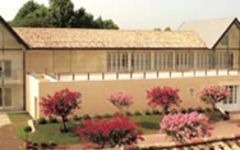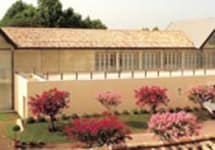Chateau Leoville Poyferre 1982
-
Robert
Parker -
Jeb
Dunnuck -
James
Suckling -
Wine
Spectator



Product Details
Your Rating
Somm Note
Winemaker Notes
Professional Ratings
-
Robert Parker's Wine Advocate
The 1982 Léoville Poyferré continues to drink brilliantly at age 40 (and I have enjoyed three bottles this year), wafting from the glass with aromas of sweet cassis fruit mingled with notions of loamy soil, cigar wrapper, licorice, black truffle and pencil shavings. Full-bodied, broad and sumptuous, with a velvety attack that segues into a deep, fleshy core, it's generous and enveloping, with lively acids and fine, powdery tannins that still deliver a vestige of back-end grip. Today, this is a strong contender for the title of Saint-Julien's wine of the vintage, with Ducru-Beaucaillou and Léoville-Las Cases as its only plausible rivals.
-
Jeb Dunnuck
An absolute joy to drink, and a wine I’ve been lucky enough to have multiple times recently, the 1982 Château Léoville Poyferré is fully mature and has a classic, graceful, nuanced perfume of sweet red and black currants, woodsmoke, tobacco leaf, baking spices, and hints of cedar. With medium to full-bodied richness on the palate, it’s beautifully balanced and has ripe, polished tannins, a solid spine of acidity, and a great finish.
-
James Suckling
Rather porty with dried tomato to the currants and light raisins on the nose. Full-bodied with lots of dried fruit, as well as mushroom, cedar and some bark flavors. It’s nicely layered and complex. Slightly drying out. Drink now.
- Wine Spectator
Other Vintages
2024-
James
Suckling - Vinous
- Vinous
-
Jeb
Dunnuck -
James
Suckling - Decanter
-
Robert
Parker
-
Jeb
Dunnuck -
James
Suckling - Decanter
-
Robert
Parker -
Wine
Spectator
- Vinous
-
James
Suckling - Decanter
-
Jeb
Dunnuck -
Wine
Spectator -
Robert
Parker
-
Jeb
Dunnuck - Vinous
-
Robert
Parker -
James
Suckling - Decanter
-
Wine
Spectator -
Wine
Enthusiast
-
Jeb
Dunnuck -
James
Suckling -
Robert
Parker - Decanter
-
Wine
Spectator
-
Jeb
Dunnuck -
James
Suckling -
Robert
Parker -
Wine
Spectator -
Wine
Enthusiast - Decanter
-
Wine
Enthusiast -
Jeb
Dunnuck -
James
Suckling - Decanter
-
Robert
Parker -
Wine
Spectator
-
Jeb
Dunnuck -
James
Suckling -
Wine
Spectator -
Robert
Parker -
Wine
Enthusiast - Decanter
-
Jeb
Dunnuck -
James
Suckling -
Wine
Enthusiast -
Wine
Spectator - Decanter
-
Robert
Parker
-
Wine
Enthusiast - Decanter
-
James
Suckling -
Jeb
Dunnuck -
Wine
Spectator -
Robert
Parker
-
Wine
Enthusiast -
James
Suckling -
Jeb
Dunnuck -
Robert
Parker -
Wine
Spectator -
Wilfred
Wong
-
Wine
Enthusiast -
Robert
Parker -
James
Suckling -
Wine
Spectator
-
Jeb
Dunnuck -
Robert
Parker -
Wine
Enthusiast -
James
Suckling -
Wine
Spectator
-
Robert
Parker -
Jeb
Dunnuck -
James
Suckling - Decanter
-
Wine
Enthusiast -
Wine
Spectator
-
Robert
Parker -
Wine
Enthusiast -
James
Suckling -
Wine
Spectator -
Connoisseurs'
Guide
-
Wine &
Spirits -
Wine
Enthusiast -
Robert
Parker -
Wine
Spectator
-
James
Suckling -
Wine &
Spirits -
Wine
Enthusiast -
Robert
Parker -
Wine
Spectator -
Connoisseurs'
Guide
-
Jeb
Dunnuck -
Robert
Parker -
Wine
Enthusiast -
Wine
Spectator
-
Jeb
Dunnuck -
Robert
Parker -
James
Suckling -
Wine
Spectator -
Wine
Enthusiast
-
Robert
Parker
-
Wine
Enthusiast -
Robert
Parker -
Wine
Spectator
-
Robert
Parker -
Jeb
Dunnuck -
Wine
Spectator -
James
Suckling - Decanter
-
Wine &
Spirits
-
Wine &
Spirits
-
Wine
Spectator
-
Robert
Parker -
Wine
Spectator
-
Wine
Spectator -
Robert
Parker
-
Robert
Parker -
Wine
Spectator
-
Wine
Spectator


Major investments were made to bring out the best in the vineyards, and the cellars were also renovated. In 1994, noted consulting oenologist Michel Rolland began to offer his precious winemaking advice. The final blend is made after many careful tastings. Chateau Léoville Poyferré is aged in oak barrels, 75% of which are new every year. It is an extremely well-balanced wine with a great deal of finesse and excellent aging potential.

One of the world’s most classic and popular styles of red wine, Bordeaux-inspired blends have spread from their homeland in France to nearly every corner of the New World. Typically based on either Cabernet Sauvignon or Merlot and supported by Cabernet Franc, Malbec and Petit Verdot, the best of these are densely hued, fragrant, full of fruit and boast a structure that begs for cellar time. Somm Secret—Blends from Bordeaux are generally earthier compared to those from the New World, which tend to be fruit-dominant.

An icon of balance and tradition, St. Julien boasts the highest proportion of classed growths in the Médoc. What it lacks in any first growths, it makes up in the rest: five amazing second growth chateaux, two superb third growths and four well-reputed fourth growths. While the actual class rankings set in 1855 (first, second, and so on the fifth) today do not necessarily indicate a score of quality, the classification system is important to understand in the context of Bordeaux history. Today rivalry among the classed chateaux only serves to elevate the appellation overall.
One of its best historically, the estate of Leoville, was the largest in the Médoc in the 18th century, before it was divided into the three second growths known today as Chateau Léoville-Las-Cases, Léoville-Poyferré and Léoville-Barton. Located in the north section, these are stone’s throw from Chateau Latour in Pauillac and share much in common with that well-esteemed estate.
The relatively homogeneous gravelly and rocky top soil on top of clay-limestone subsoil is broken only by a narrow strip of bank on either side of the “jalle,” or stream, that bisects the zone and flows into the Gironde.
St. Julien wines are for those wanting subtlety, balance and consistency in their Bordeaux. Rewarding and persistent, the best among these Bordeaux Blends are full of blueberry, blackberry, cassis, plum, tobacco and licorice. They are intense and complex and finish with fine, velvety tannins.
